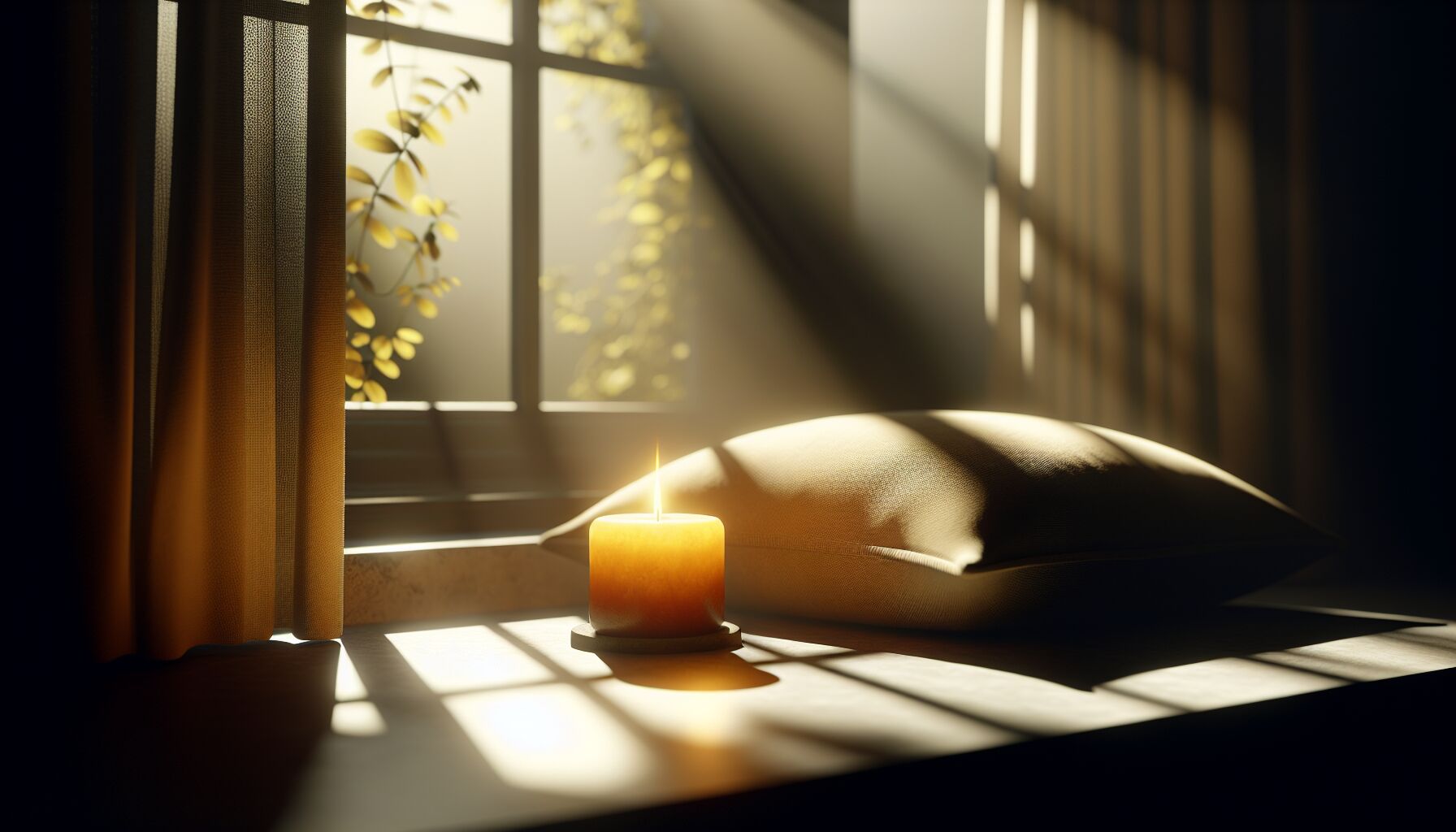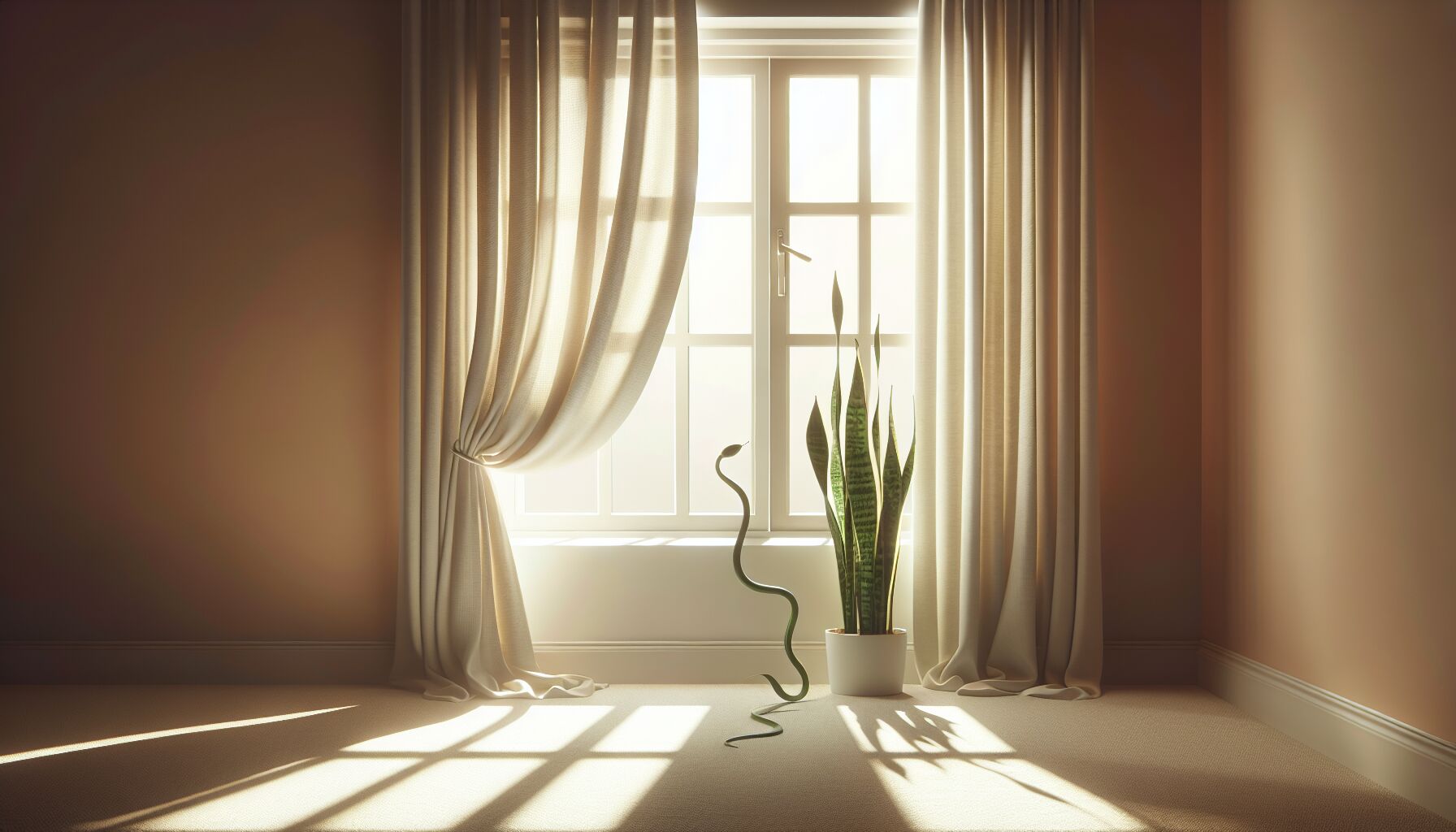 Not every corner of your home is cut out to become a sacred retreat. But with a bit of attention and a clear sense of purpose, you can carve out a spot that gently invites stillness the same way a shaded grove tempts you to rest. The first step? Choosing where this space will live.
Not every corner of your home is cut out to become a sacred retreat. But with a bit of attention and a clear sense of purpose, you can carve out a spot that gently invites stillness the same way a shaded grove tempts you to rest. The first step? Choosing where this space will live.
Space doesn’t have to mean square footage. Even in a one-bedroom apartment, there’s often a quiet nook — a sun-dappled windowsill, an unused corner in the bedroom, or maybe a spot that always seems just a little warmer after sunrise. What matters more than size is how the space feels. Is it somewhere your shoulders naturally relax? Could your breath settle there? If it’s cramped, noisy, or heavily trafficked (like right beside the laundry room), you’ll be working against the grain.
Now, it’s tempting to want the “perfect” setting — something Pinterest-worthy, full of flowing linen and backlit crystals. But honestly, what your sacred space really needs first is respect. Respect for your attention, for your quiet, for your nervous system’s slow return to baseline. That often means privacy. You might need to reposition a chair, hang a curtain, or scoot an end table over to create a buffer from household distractions.
There’s also the question of light. Sunlight can be a vital ally for cultivating presence. Natural lighting sets the body’s circadian rhythm, and some studies suggest it even supports the release of serotonin, which helps with mood regulation and — you guessed it — relaxation. But here’s the trick: what feels energizing at 7 AM might be overwhelming for evening meditation. So flexible lighting matters. Think: soft lamps, beeswax candles, or, if you’re feeling traditional, oil lanterns (just always put fire safety first).
Let me explain why location matters on a deeper level. The space you choose begins to hold memory — energetic imprints from repeated practice. Come back to it again and again, and entering that place starts cueing your whole system to slow down. It’s a kind of embodied wisdom. That’s why location consistency — even in small ways — matters more than novelty.
And if you’re working with shared living arrangements, don’t get discouraged. A portable meditation kit can help. Grab a small mat, comforting textile, incense (if that’s your thing), and maybe a small photo or relic. The moment you lay it out consistently in the same area, even temporarily, that space begins to shift. It becomes more than just a spot on the floor. It becomes your home sanctuary.
As Thich Nhat Hanh once said, “We don’t need to look for paradise outside ourselves — it exists within each and every one of us.” Choosing your location is really about selecting a place where that inner world can breathe. Where intention takes root. Where silence isn’t something that happens to you — it’s something you meet.
There’s a quiet practicality to all this too. Will you be sitting on the floor or in a chair? Do you need back support? Can you stretch out if you’re doing a lying-down practice like yoga nidra? Thinking like a builder comes in handy here. You might need to clear that cluttered corner, roll out a soft rug, or install a shelf just to hold your small reminders of presence. Don’t be afraid to claim the space through small rituals; rearranging the mundane becomes a form of mindfulness in itself.
And let’s not overlook sound. What do you hear there? Are you near the hum of a refrigerator or the highway? Maybe you’ll benefit from a white noise machine, soft instrumental playlists, or something as old-fashioned as heavy curtains to muffle the outside world. You’re not isolating — you’re cultivating.
“Silence is not the absence of something, but the presence of everything.” — Gordon Hempton
So go ahead — stand in different parts of your living space. Close your eyes. Stay quiet for a good thirty seconds. You’ll know which area is asking for reverence. And if none of them feel right yet, it might mean they’re waiting for you to begin that shift.
This isn’t about escape. It’s about arriving. Your meditation space should support you in remembering what gets buried beneath the noise: stillness, warmth, presence. That’s how mindfulness becomes more than just a buzzword with a cushion under it — it becomes a way to come home to yourself.
Incorporating meaningful elements
Once you’ve chosen the spot where your home sanctuary will live, it’s time to fill it with meaning — not stuff. What you bring into your meditation space should whisper something to your spirit, not shout trends in your ear. This isn’t a design project; it’s more like gathering tools for inner work. And just like a gardener doesn’t haul in random tools for tending delicate seedlings, you want to be deliberate with what surrounds you while you’re turning inward.
Start with the pieces that hold personal weight — those that root you or remind you why this practice matters. Maybe it’s a smooth river stone picked up during a walk that felt like a turning point, or a framed photo of someone whose presence calms your heart. These are symbols — but not in the decorative sense. They’re anchors for intention. In fact, Carl Jung once observed, “The soul demands your symbolic life.” We’re wired to respond to objects that mean more than they appear to be. So give yourself permission to gather meaning in small, honest ways.
Some people find comfort in ritual tools: a singing bowl, mala beads, handmade incense, or a bit of sacred wood like palo santo (always sourced ethically, please). But let me say this — they’re not mandatory. If chanting sutras resonates, beautiful. If lighting a beeswax candle and saying nothing is your rhythm, also beautiful. What matters most is that each element serves your presence — not distracts from it.
And here’s where it gets interesting: the sense of touch plays a bigger role than most folks think. That old woven blanket with some wear and tear might soothe you more than a brand-new silk cushion. Texture grounds us. It’s somatic. When the body feels safe and soothed — through familiar fabrics, steady lighting, a calming scent — the mind can begin to settle. You’re not just decorating, you’re speaking the language of the nervous system. That’s mindfulness in its raw form.
Lighting deserves a second mention, because it’s not just about visibility — it’s mood, memory, vibe. A Himalayan salt lamp creates a warm low glow that’s easier on the eyes and helps signal to your circadian rhythm that it’s time to wind down. If you practice after dark, low-spectrum bulbs (look for 2000–3000K on the Kelvin scale) can make a big difference. Harvard researchers point out how artificial light — especially cool white or blue light — can suppress melatonin and interfere with sleep cycles. So while you don’t need full blackout curtains, leaning into warm, dimmable lighting adds to that grounded calm.
A natural digression here — scent. People either overlook it or go overboard. A single source, like a stick of cedarwood incense, a dab of essential oil, or fresh herbs in a small bowl (rosemary and sage are grounding favorites) can trigger memory and calm faster than any mantra. Scent hits the limbic system — the part of the brain tied to emotion — in milliseconds. That means the right aroma can cut through mental static quicker than you’d expect. But if you’ve got allergies or sensitivities (or housemates who do), try gently simmering citrus and cinnamon in water before your session instead of lighting anything.
Now, what about audio? Try asking yourself: what does quiet sound like for me? For some, it’s genuine silence. For others, it’s rain sounds, distant woodwinds, or a gentle crackle loop — like sitting beside a fire that needs no tending. This is where simple tools like the Insight Timer app or YouTube’s ambient sound libraries can be helpful. Just skip the overly processed tracks — you’ll hear the difference. Authentic nature recordings or gently layered tonal tracks provide background stillness without pulling focus.
If you use technology in the space (like a timer or audio player), keep it subtle. Tuck wires out of view, switch devices to airplane mode, and maybe drape a linen over anything that visually nags at you. The goal isn’t perfection. It’s harmony. Things should feel like they belong — each piece humming a shared purpose: relaxation, presence, awakening.
Here’s a quick check-in question: when you sit down in your meditation space, do your shoulders drop? Does your breathing slow? If not yet, don’t worry. Tend to your space as you would a bonsai — a quiet trim here, a little encouragement there. Over time, it reflects you back to yourself. That’s what makes it sacred. Not the objects, but the meaning you weave into them.
“Sacredness doesn’t come from outside objects — it emerges when we treat something with reverence.” — bell hooks
If you’re the practical type, maybe try a short mantra every time you arrange your space. Just a few quiet words. Even something simple like, “This is a place of stillness,” as you lay down your cushion or light a candle. That ritual stitch helps thread intention into the fabric of your home sanctuary. That’s the real work — the invisible part — and it changes how you show up long after you leave the cushion.
Remember: this is where mindfulness lives. Not in the tools, but in how you relate to them. Keep it simple, honest, and rooted in what brings you back to yourself. Because sacred is not a style — it’s a tone. A certain kind of listening. A pause, held long enough to hear the call
Maintaining a peaceful atmosphere
 There’s a quiet kind of upkeep that sacred spaces ask of us — not in the loud, to-do list sense, but more like tending a slow-growing plant that only blooms when the atmosphere is right. Maintaining a peaceful atmosphere doesn’t mean freezing the space in perfection. It means being in relationship with it. Listening to what the space needs just as you listen inward during a sit.
There’s a quiet kind of upkeep that sacred spaces ask of us — not in the loud, to-do list sense, but more like tending a slow-growing plant that only blooms when the atmosphere is right. Maintaining a peaceful atmosphere doesn’t mean freezing the space in perfection. It means being in relationship with it. Listening to what the space needs just as you listen inward during a sit.
First, air quality. Sounds simple, yet it’s often overlooked. Stale, recycled air can subtly dampen your energy without you even realizing it. If windows are a part of your setup, crack one open a few minutes before practice — yes, even in winter. That quick exchange of breath between your home and the outdoors resets more than oxygen levels — it shifts the emotional tone of the space. You might be surprised how much lighter the room feels. And if ventilation is poor, consider a small HEPA filter or keeping a few low-maintenance plants like snake plant or pothos. They quietly purify — and they’re very forgiving.
Now let’s talk clutter. Not the kind that makes your space look messy — though that matters too — but energetic clutter. Stuff that doesn’t belong. Forgotten mail, yesterday’s coffee cup, a phone charger that slithered its way into the corner. Those things tug on your awareness like a loose thread on a sweater. One small practice? After each session, take ten seconds to reset the space. Re-fold the blanket, straighten the cushion, extinguish the candle intentionally. These micro-gestures say, “This space matters.” And over time, they reinforce mindfulness. You stop drifting through your routines and start relating to them.
Sound also plays a bigger role than many realize. You’re not just blocking out noise — you’re intentionally crafting a soundscape, or the absence of one, that allows your body to soften. Think of it like soundproofing the inside of a bell. If outside noise is hard to avoid — whether it’s neighborhood traffic, construction, or boisterous housemates — acoustic panels can make a surprising difference. They don’t have to be expensive or ugly either. Thick fabric wall hangings or cork boards do the job well and blend into a home sanctuary without stealing the focus.
If earplugs or headphones are too isolating, low-volume sound masking is your ally. Apps like myNoise let you tailor ambient sounds to your specific space’s acoustics. A soft brown noise or forest stream can smooth out the sharp edges of urban living. And every now and then, try total silence — even if it’s only a minute or two, just to feel what’s present without filter. Quiet isn’t always comfortable at first, especially if we’ve gotten used to multi-tasking noise as a buffer. But that raw quiet holds gifts we often avoid receiving.
Temperature is another unspoken layer. A chill in the room might be enough to keep your breathing short and shoulders tense, while excess heat makes you restless. If you can’t control the thermostat, a weighted throw or a small space heater on low can help regulate that sense of held comfort. Your body responds to cues like these automatically — you’re easing it into relaxation before the mind even begins to settle.
And let’s not forget — peaceful isn’t always pristine. Sometimes it’s a room that carries yesterday’s incense or last week’s affirmation on the mirror. That’s okay. Sacred spaces are lived-in, not showroom-ready. If the floor creaks or the cat curls up nearby, let it be part of the texture, not a detour. Your home sanctuary doesn’t need to guard against life — it needs to cradle it.
“Peace is not merely the absence of noise, but the presence of clarity,” said John O’Donohue, and that’s worth remembering when frustration creeps in through paper-thin walls or sudden disruptions.
Some find it helpful to refresh the space on a seasonal cycle. Think of it like spiritual housecleaning — not purging, but refining. You might switch out a textile, rotate altar pieces, or let all tools rest in a drawer for the week while you return to bare practice. These pauses prevent stagnation and keep your connection to the space alive and responsive. You’re not just maintaining aesthetics — you’re tending to energy, the way a farmer listens for when to till or when not to disturb the soil.
Let me say this straight: your meditation space isn’t meant to be “perfectly peaceful” every day. Life is loud. Kids run, dishes clink, neighbors mow. What you’re really doing in this ritual of maintenance is making the space *available* for peace. You’re signaling to your nervous system: this is where we remember how to slow down. And that act — showing up to foster calm amid the unpredictability — is the heart of mindfulness.
Eventually, the space starts holding a mirrored calm like still water. Every time you step into it, even before you sit, your body recognizes the atmosphere you’ve nurtured. Breath slows. Shoulders soften. Not because you forced a scene, but because you were steady in preserving its quiet vocabulary.
This is how relaxation becomes more than a temporary state — it becomes part of the architecture of your life. A rhythm built into the walls, one gentle practice at a time.
 DS Haven In Light Of Things
DS Haven In Light Of Things






